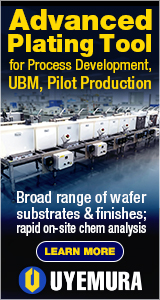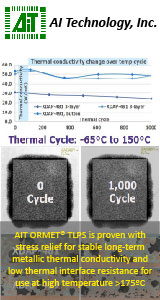|

|
|
| Ask the Experts | |||||||
|
|||||||
|
April 23, 2007 - Updated July 4, 2007 - Originally Posted Proper handling for raw boardsWe are planning to set up an off line de-boxing operation and were wondering what the best method is to use. Is there an industry best practice for handling raw PCBs to the production process to prevent dust and cardboard debris? Chuck Dixon |
|||||||
| Expert Panel Responses | |||||||
|
I dont believe there is an industry standard but "Tacky" cleaners can be purchased that ensure the bare PCBs are free of any contomaination prior to release to the line. They operate two rollers over/under and with a no residue tacky surface that picks up particulates. Alternatively : "Ionised air stream with Vacuum following" systems can be purchased that do the same thing without the need for consumables.
CEO ATEK llc Allen Duck is a 20-year Electronics Industry veteran with Global experience in multiple fields of technology and management. He started A-Tek in 2006 to provide a sales and service channel for international equipment companies wishing to offer value based solutions to USA companies.
There are 2 standard technologies available for loading bare PCBs to a production line and there is also a limited amount of companies that offer PCB cleaning after load but prior to screen printing. The Vacuum style loading system is able to hold stacks of bare PCBs (generally up to 160 pieces) on an elevator type platform. The platform is indexed to the proper height which enables a top side vacuum system to reach down and pick each PCB from the stack and then place them onto a set of edge rails. This begins the loading process. The vacuum style systems are great for PCBs that do not have many holes and the cups may be positioned in solid areas for picking. The other style of loader is the De Stacker. The De Stacker is generally used when PCBs have many holes and a vacuum system can not be used. This type of station is a top side, drop down style and it uses mechanical devices to separate PCBs before placing them onto an edge rail. Because this is a top loading station most are generally limited to 80 PCBs (due to weight). Both station should offer PASS through capability for double sided production capability. So after the PCB is loaded onto the edge rails the only other steps are 1) either transfer the PCB directly into the screen printer or 2) brush and clean the PCB prior to the printing process. A station called PCB Debris Removal System may be used to gently sweep and vacuum away any unwanted debris before printing. This station again used edge rails to transport the PCB and top side ESD brush (with vacuum) and ionizer to clean the top surface prior to print. So the line set up would be: Bare Board Loading Station (Vacuum or De Stacker) into PCB cleaning station, into screen printer. I have attached a 3 page PDF that will show you the 3 different systems.
President and CEO PROMATION, Inc. Mr Goldberg has practical experience in production line layout, process flow and cycle rate analysis. He knows how to avoid bottle necks and most related PCB or pallet handling questions.
|
|||||||
| Submit A Comment | |||||||
|
Comments are reviewed prior to posting. You must include your full name to have your comments posted. We will not post your email address. |
|
Free Newsletter Subscription
Circuitnet is built for professionals who bear the responsibility of looking ahead, imagining the future, and preparing for it. Insert Your Email Address |
|

|




